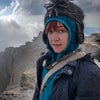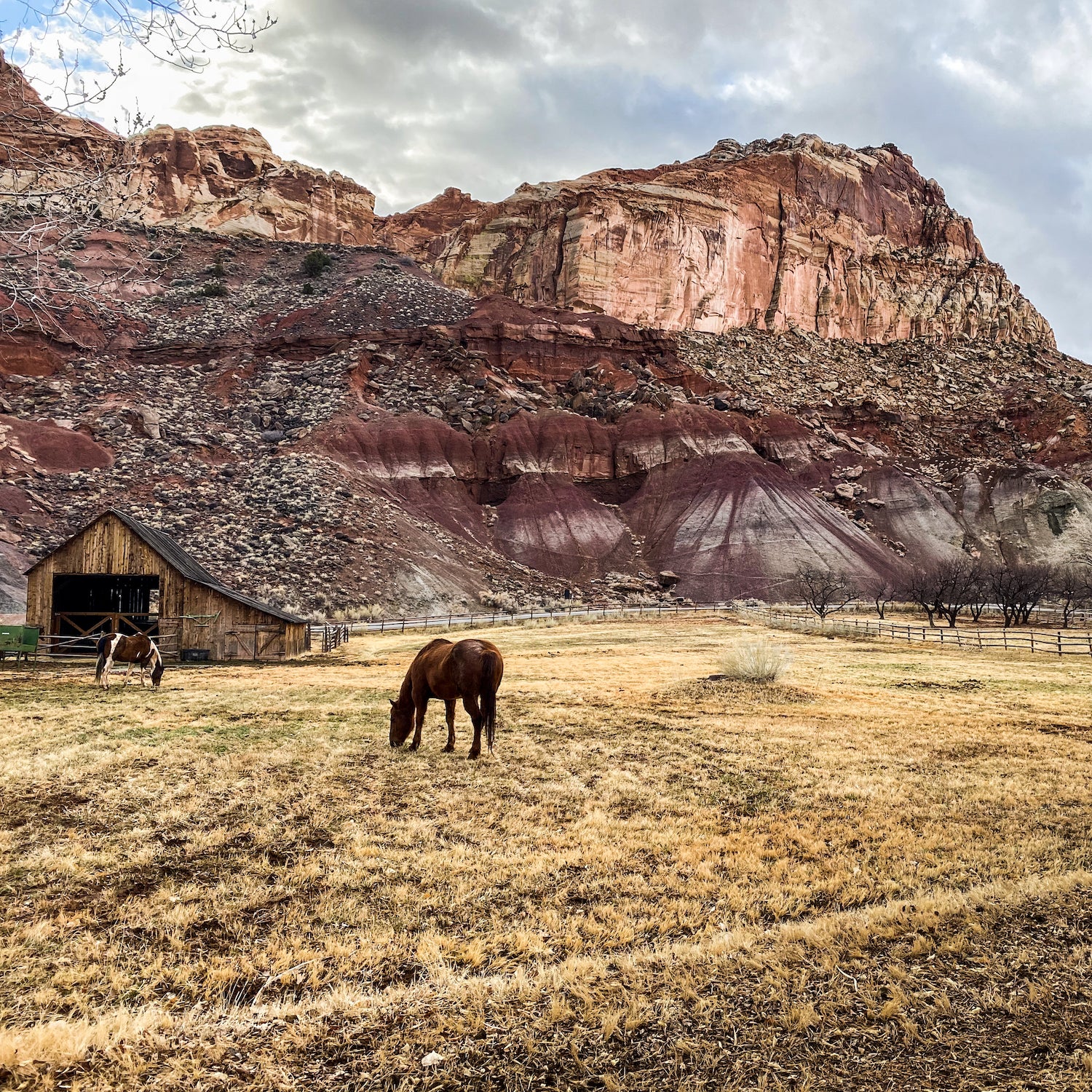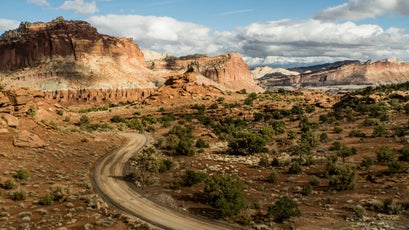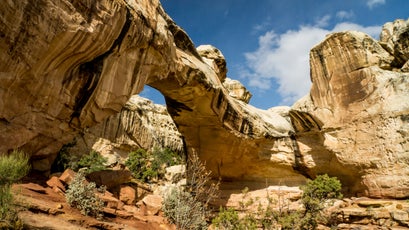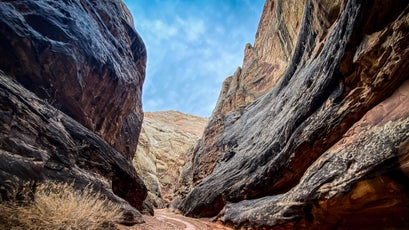62 Parks Traveler╠řstarted with a simple goal: to visit every U.S. national park in one year. Avid backpacker and public-lands nerd╠ř╠řsaved up, built out a tiny van to travel and live in, and hit the road. The parks as we know them are rapidly changing, and she╠řwanted to see them before itÔÇÖs too late.
Pennington has returned to traveling and is committed to following CDC guidelines during the COVID-19 pandemic to ensure the safety of herself and others. SheÔÇÖs visiting parks as they reopen and closely adhering to best safety╠řpractices.
When visiting Capitol Reef, it is customary for a ranger to try and convince you to eat pie for breakfast. At least╠řthat was my experience when I inadvertently traveled to the park on March 14, or Pi Day,╠řthe first day sweets are sold there. When I waltzed up to the counter at the visitor center, it was clear that baked goods were as almost as important╠řas the regionÔÇÖs natural bridges and slot canyons.
ÔÇťItÔÇÖs got fruit in itÔÇŁ was the rangerÔÇÖs indisputable logic, when I initially balked at eating a dessert at 9 A.M. With an argument like that, how could I resist? I set off for the Gifford Homestead in the parkÔÇÖs historic Fruita district, where I╠řordered the berry crumble. I have no regrets.
With a brain full of trailheads and a belly full of sugar, I drove my van 18 miles, clear across the park, past╠řsteep cliffs and mustard-hued canyon walls. My mission was an off-trail journey into one of Capitol ReefÔÇÖs most notorious slot canyons: Burro Wash,╠řlocated in the far-flung Waterpocket Fold area.
Waterpocket Fold is the parkÔÇÖs most defining geological feature. A╠ř100-mile wrinkle in the earthÔÇÖs surface, itÔÇÖs a classic example of a monocline formationÔÇöa dramatic rift between otherwise horizontal layers.
I parked off Notom-Bullfrog Road under a gloomy sky and began hiking up a wide╠řgravel wash, dodging cow patties and the occasional pang of loneliness. If youÔÇÖve ever wanted to embolden your feelings of solitude, setting off toward╠řan unmarked slot canyon in the middle of rural Utah on a cloudy day is sure to do the trick. I waved at a timid herd of soot-black cows as though they were my╠řcompanions. It felt nice not to be the only one on the trail.
Soon enough, the canyon walls began to narrow, and I found myself scrambling up and over huge hunks of Navajo sandstone to avoid stagnant pools of water. The hike╠řwas quieter than I expected, less ░┬ż▒▒˘╗ň╠řand more Cast Away. When I finally reached a dark pool that would have required a full-body soak to get across, I chose safety over brashness, humbly turned around, and clomped back to my van.
On day two, I opted for a more maintained trail into Spring Canyon, a deep winding groove cut into gigantic sandstone bluffs╠řby flash floods that rip through the area during the summer monsoon season. Not even a mile into the hike, I was awestruck. Its big, crimson cliffs╠řrose╠řa thousand feet above the ground and were╠řstriped with deep purples and browns formed by millions of years of sedimentary strata. The trek had all the wow factor of Zion Canyon without the roads, the shuttles, or the crowds.
With its scenic drives through the red rocks and easy access to epic canyon treks, I wondered why Capitol Reef wasnÔÇÖt at the top of more travelersÔÇÖ lists. I hiked for three hours and only saw two other groups. ItÔÇÖs a struggle to find that kind of solitude in UtahÔÇÖs other national parks.
Though the silence I encountered wasnÔÇÖt always a welcome companion, it challenged me to move carefully, take deep breaths, and learn how to feel secure╠řinside my own skin. ThatÔÇÖs just about the most valuable thing a wild place can offer.
62 Parks Traveler Capitol Reef Info
Size: 241,904 acres
Location: Central Utah
Created In: 1937 (national monument), 1971 (national park)
Best For: Canyoneering, hiking, horseback riding, climbing, cultural history, backpacking
When to Go: Spring (34 to 75 degrees) and fall (31 to 80 degrees) bring near perfect temperatures. In summer (59 to 91 degrees), rain and flash floods are not uncommon. Winter is tolerable but cold (20 to 47 degrees), and visitors should watch out for╠řsnow on access roads.
Where to Stay: Although BLM land surrounds the park and provides easy camping for those following╠ř, campers looking for amenities should check out Capitol ReefÔÇÖs . ItÔÇÖs centrally located and offers fire rings, picnic tables, potable water, and incredible views of the neighboring sandstone monoliths.
Where to Eat: The in Torrey, Utah, serves up ÔÇťspaghetti westernÔÇŁ fare in casual digs just 12 minutes from the parkÔÇÖs visitor center. Come for the freshly baked pizza, stay for the live music.
Mini ║┌┴¤│ď╣¤═°: Cruise past Gifford Homestead, Grand Wash, and Capitol Gorge on Capitol ReefÔÇÖs . This paved motorway is full of turnouts and spectacular vistas╠řperfect for the amateur photographer or geologically curious; just step out of the car for any number of views of the parkÔÇÖs varied rock layers, from the Moenkopi to the Navajo Formations.
Mega ║┌┴¤│ď╣¤═°: Seeking solitude? Backpack . The 23-mile journey takes in╠řsheer cliffs of rust- and ivory-colored sandstone and is best experienced as a two-night point-to-point trek. Free overnight permits can be obtained at the Capitol Reef Visitor Center.

